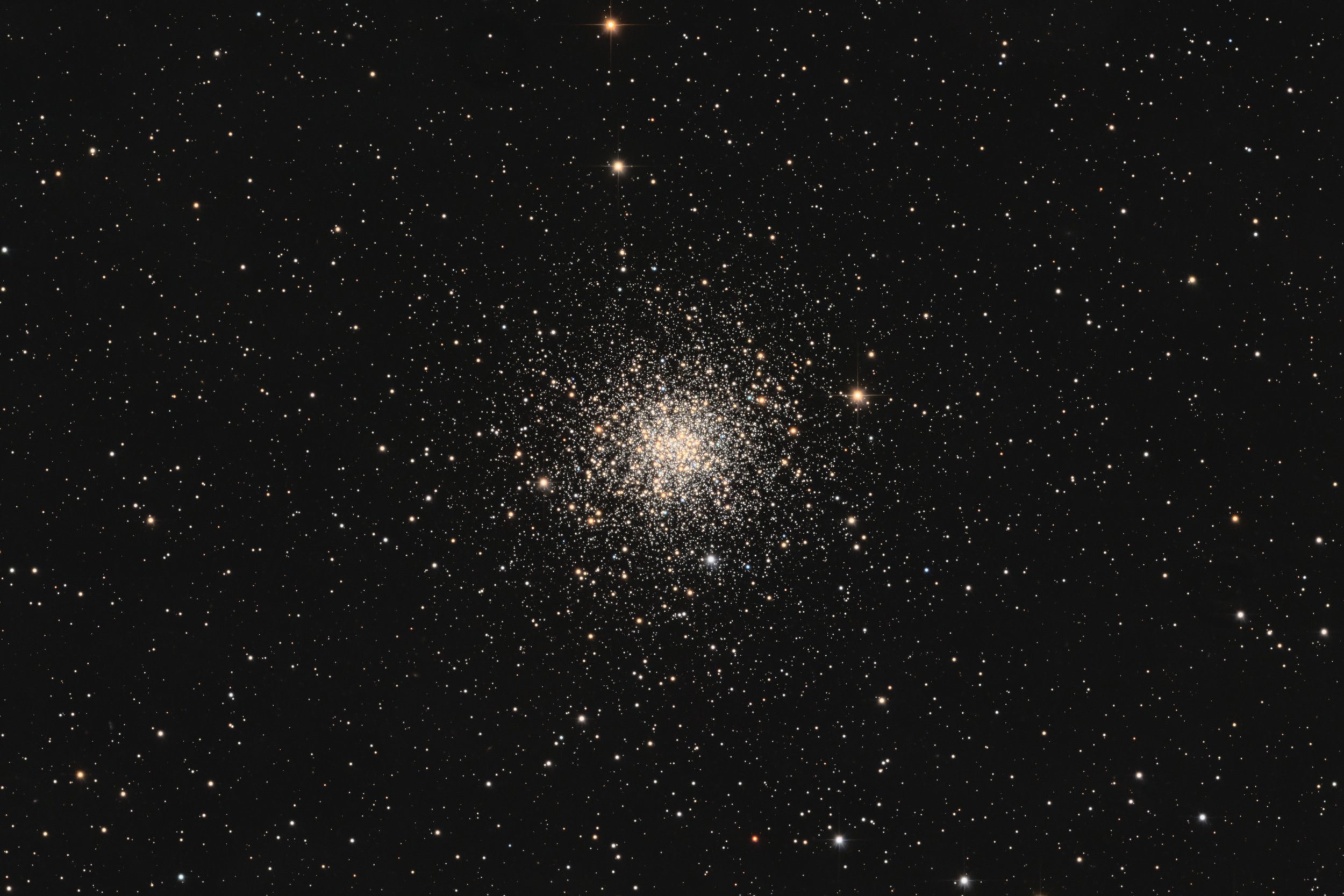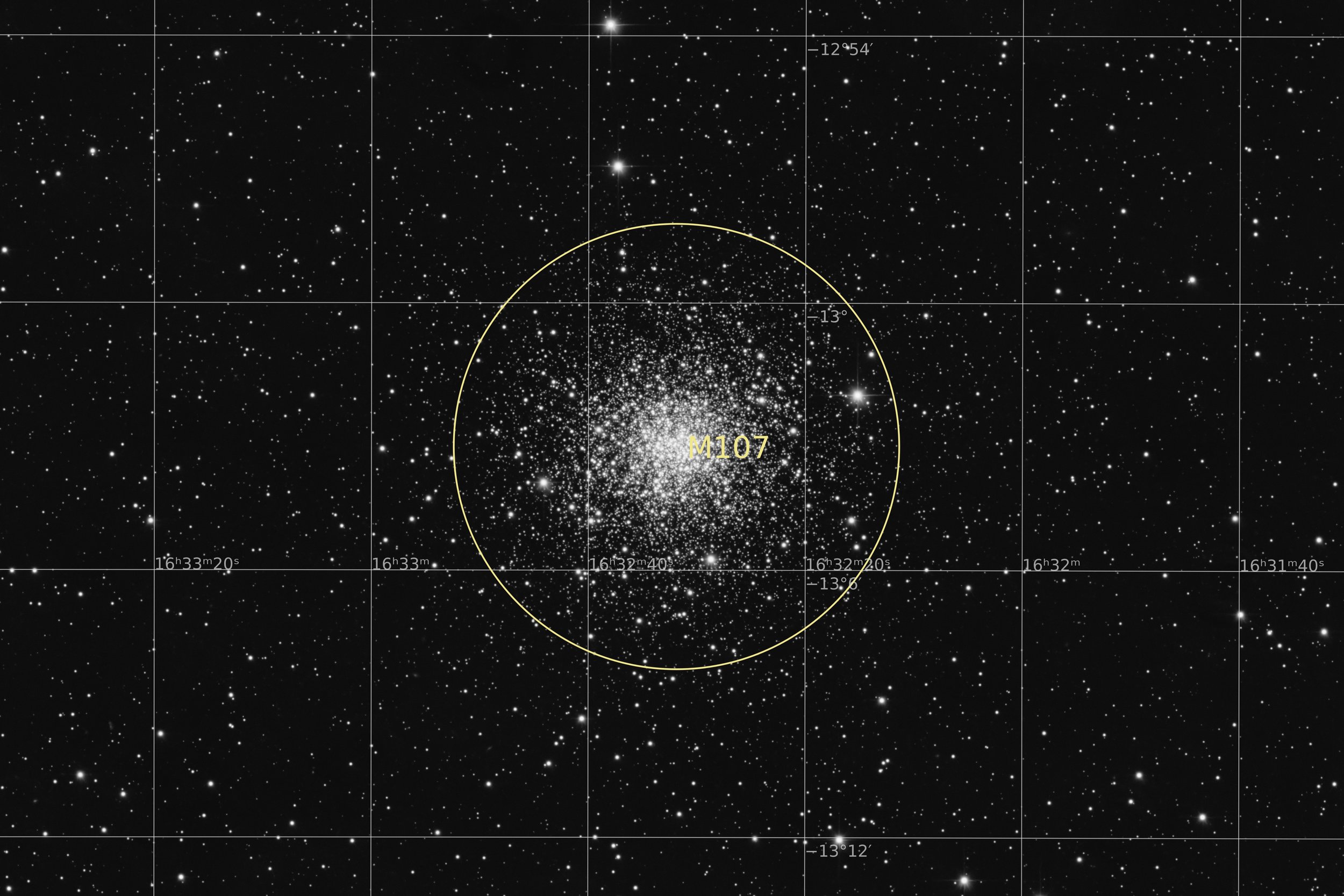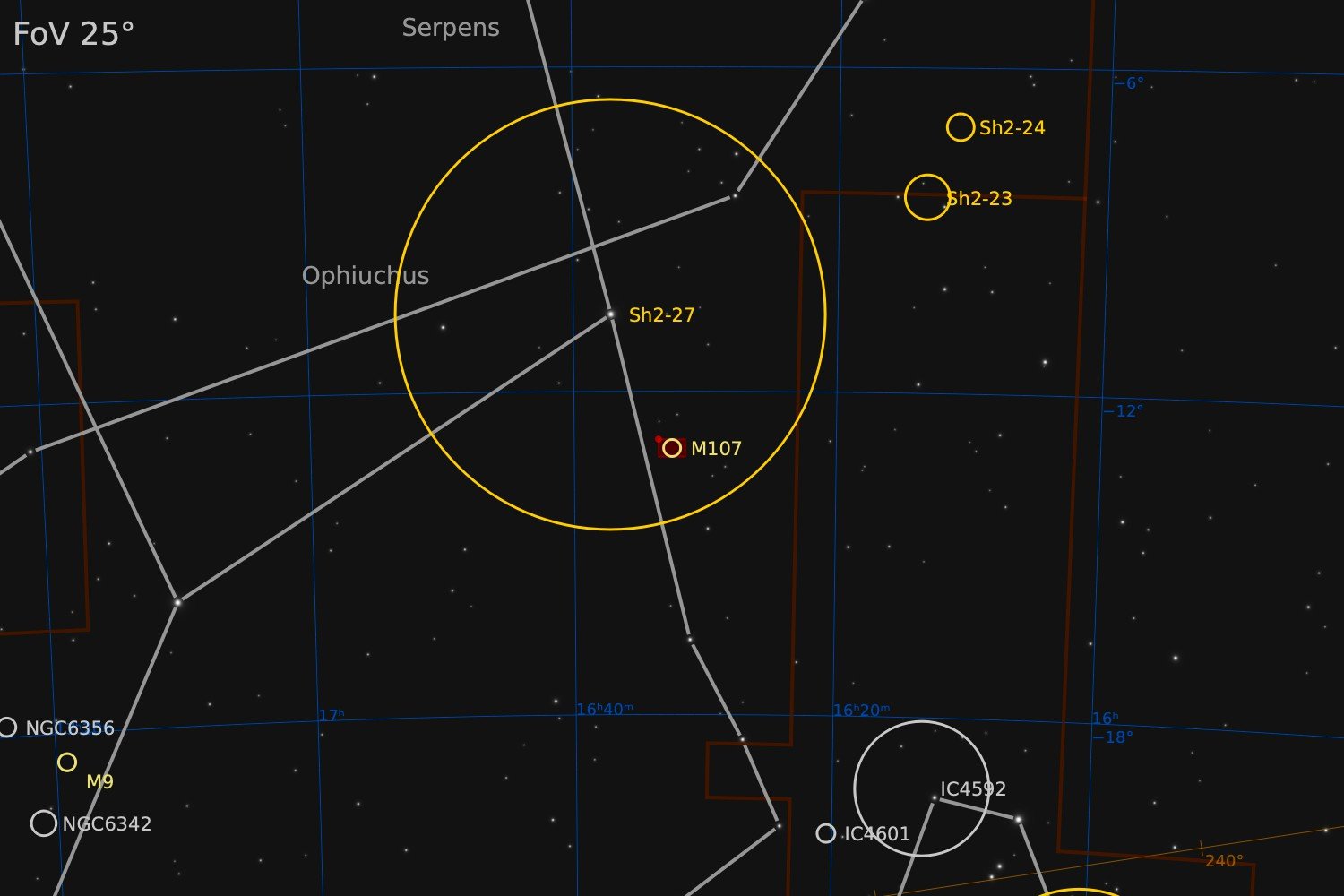M107
NGC 6171, Crucifix Cluster
30’ x 20’ | 0.3”/px | 6000 x 4000 px | full resolution
Ophiuchus
RA 16h 32m Dec -13° 03’ | 0°



Messier 107, also known as the Crucifix Cluster, is a very loose globular cluster in a very mildly southern part of the sky close to the equator in Ophiuchus, and is the last such object in the Messier Catalogue. It was discovered by Pierre Méchain in April 1782, then independently by William Herschel in 1793. Herschel's son, John, in his 1864 General Catalogue, described it as a "globular cluster of stars, large, very rich, very much compressed, round, well resolved, clearly consisting of stars". It was not until 1947 that Helen Sawyer Hogg added it and three other objects found by Méchain to the modern Catalogue, the latter having contributed several of the suggested observation objects which Messier had verified and added. M107 is close to the galactic plane and about 20,900 light-years from Earth and 9,800 ly from the Galactic Center. Its orbit is partly as far out as the galactic halo, as is between 9,200–12,400 ly from the Galactic Center, the lower figure, the "perigalactic distance" sees it enter and leave the galactic bar. It is an Oosterhoff type I cluster with a metallicity of −0.95 and it conforms with the bulk of the halo population. There are 22 known RR Lyrae variable stars in this cluster and a probable SX Phoenicis variable.
source: Wikipedia
Data Acquisition
Data was collected over 4 nights during late May, early June 2025, using a 14” reflector telescope with full-frame camera at the remote observatory in Spain. Data was gathered using standard LRGB filters. A total of approximately 8 hours of data was finally combined to create the final image.
Location Remote hosting facility IC Astronomy in Oria, Spain (37°N 2°W)
Sessions
Frames
Equipment
Telescope
Mount
Camera
Filters
Guiding
Accessoires
Software
Planewave CDK14 (2563mm @ f/7.2), Optec Gemini Rotating focuser
10Micron GM2000HPS, custom pier
Moravian C3-61000 Pro (full frame), cooled to -10 ºC
Chroma 2” LRGB unmounted, Moravian filterwheel L, 7-position
Unguided
Compulab Tensor I-22, Dragonfly, Pegasus Ultimate Powerbox v2
Voyager Advanced, Viking, Mountwizzard4, Astroplanner, PixInsight 1.9.3
Processing
All processing was done in Pixsinsight unless stated otherwise. Default features were enhanced using scripts and tools from RC-Astro, SetiAstro, GraXpert, CosmicPhotons and others. Images were calibrated using 50 Darks, 50 Flats, and 50 Flat-Darks, registered and integrated using WeightedBatchPreProcessing (WBPP). The processing workflow diagram below outlines the steps taken to create the final image.
The processing followed largely a standard processing workflow as is shown below.
Processing workflow (click to enlarge)
This image has been published on Astrobin.
